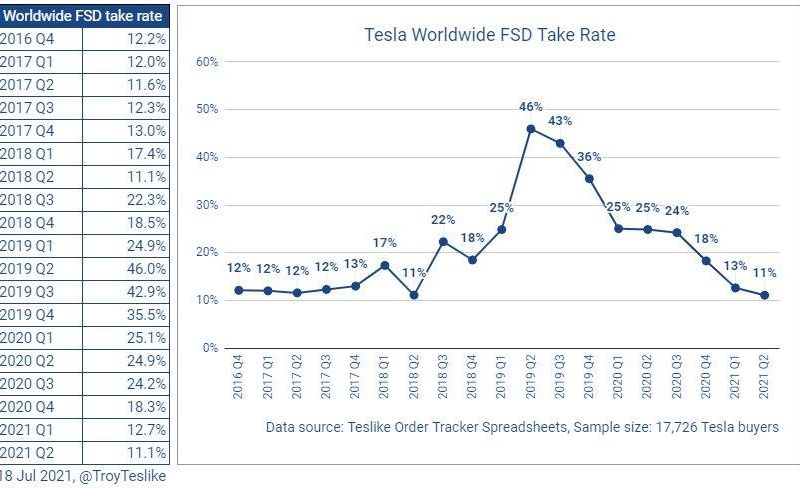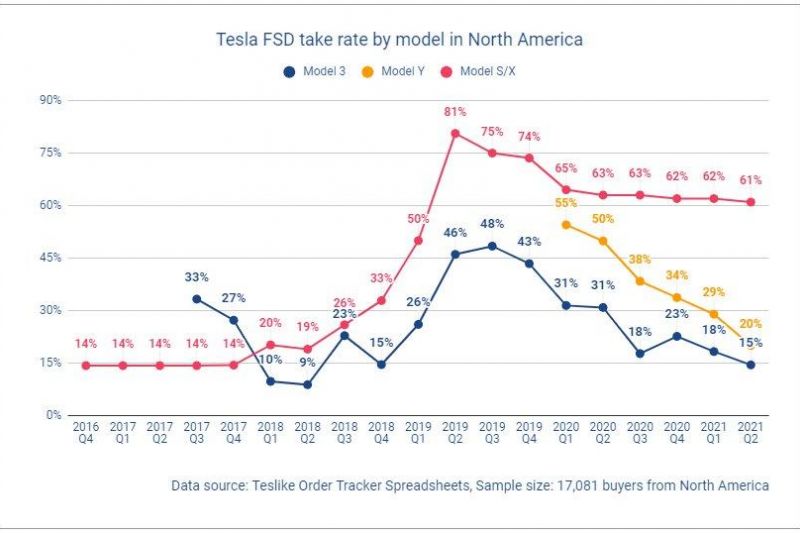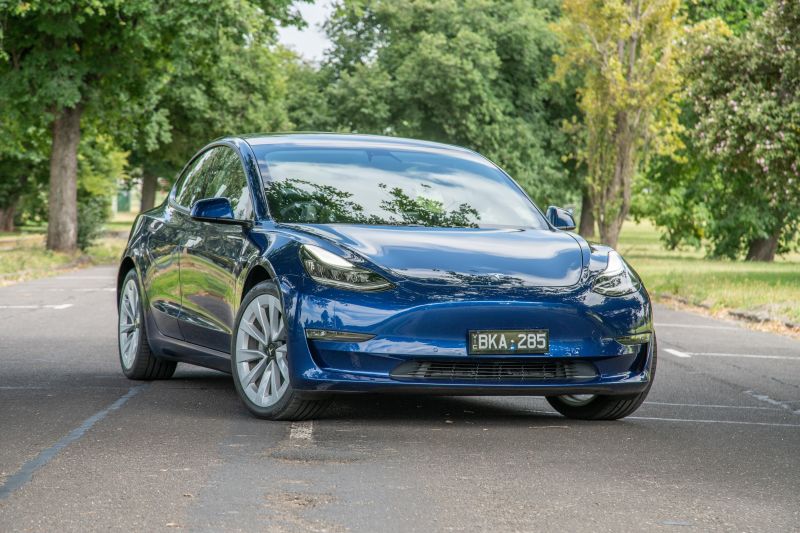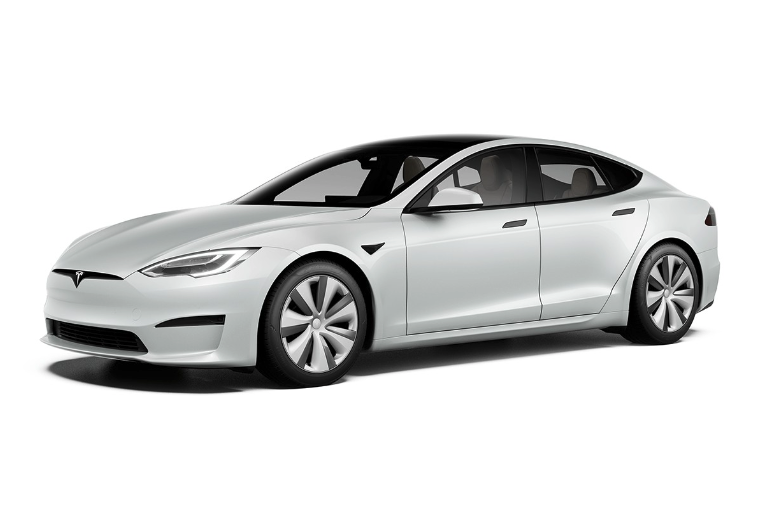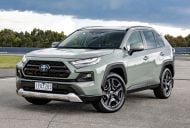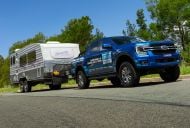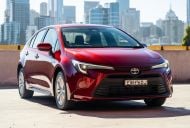Demand for Tesla’s Full Self-Driving (FSD) feature appears to be slowing.
Data from Tesla tracker Troy Teslike indicates just over one in 10 new Teslas are being sold with the expensive option.
Posted on Twitter, the figures are based on surveys of Model Y, Model 3, Model S, and Model X owners.
According to the data, just 11 per cent of buyers opted for FSD in the second quarter of 2021 (Q2).
That’s in stark contrast with figures from September 2019, where Teslike’s data says global FSD take rate peaked at 46 per cent.
This spike correlates with Tesla’s decision to rebrand its Enhanced Autopilot option as Full Self-Driving, and make a more basic Autopilot driver assist suite standard across its range.
When announced, Full Self-Driving was pitched as a Level 5 fully autonomous feature that would allow you to click a button and arrive at your destination.
It was first discussed by Elon Musk in 2015, who predicted “complete autonomy” by 2018.
After being delayed countless times, Musk has more recently promised to have SAE Level 5 autonomy with FSD by the end of 2021.
According to the figures, FSD adoption rates are declining across the entire Tesla range.
A majority of Model S/X owners ticked the FSD box (61 per cent), whereas only 15 per cent of Model 3 owners did.
In Australia, Full Self-Driving Capability is currently an option listed at $10,100.
The feature allows access to features such as navigation on Autopilot, auto lane change, auto park, summon, and traffic light recognition with stop sign control.
Tesla is working on allowing the car to automatically drive itself in the city. It’s currently in Beta, but reports about its effectiveness are mixed.
“FSD Beta 9.2 is actually not great,” Tesla CEO Elon Musk recently conceded.
Some owners have shared videos of the feature working perfectly, with others veering towards possible collisions.
This feature has only been made available to a select group of Beta testers.

